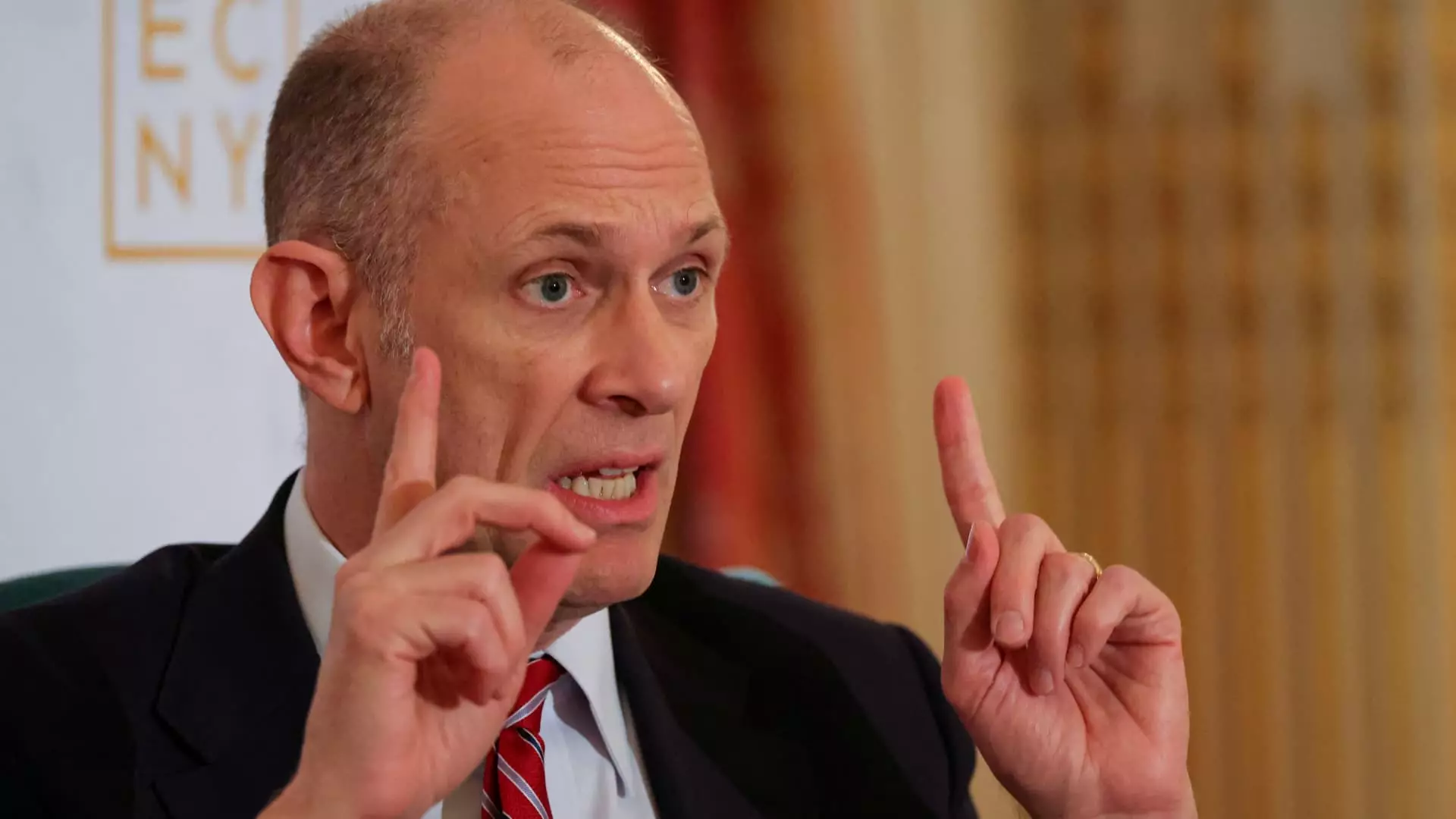In an era marked by unpredictable trade policies and heightened tariffs, the economic landscape is fraught with turbulence, challenging central banks to make informed decisions amidst uncertainty. Federal Reserve President Austan Goolsbee’s recent commentary sheds light on the intertwining effects of President Donald Trump’s tariff initiatives and their broader implications for monetary policy. It’s crucial to understand that the Fed operates in a complex ecosystem, where trade renegotiations can lead to drastic shifts in both inflation and employment figures. Goolsbee’s observations reveal the tightrope that monetary policymakers must walk when external factors—like tariffs—hamper their operational clarity.
The essence of Goolsbee’s statements reflects the sentiment that while he anticipates a downward trajectory for interest rates in the long term, the response to tariffs has engendered a more cautious stance from the Fed. Rather than adopting a straightforward policy, the Fed finds itself in a reactive position, needing to wait and evaluate the full range of trade policy ramifications. This introspection is particularly important as tariffs can potentially usher in stagflation—where stagnant growth coincides with inflation—an economic scenario that remains the bane of any monetary policy strategist.
Tariffs: A Double-Edged Sword
Trump’s announcement of a staggering 50% tariff on products from the European Union and a 25% tariff on Apple products highlights not just the volatility of his trade policies but also their consequential burden on everyday consumers. While the immediate costs associated with higher iPhone prices might seem inconsequential from a macroeconomic viewpoint, the underlying anxiety it breeds in markets cannot be dismissed. The potential for escalating prices can lead to consumer hesitance, which, in the grand scheme, slows down spending—a key driver of economic growth.
Moreover, the implications of tariffs extend beyond mere inflation; they also pose inherent risks to employment. Should businesses face escalating costs due to tariffs, they may respond by halting expansions, resulting in a deceleration of job creation. In a labor market that Goolsbee describes as being “at pretty stable full employment,” any shifts in employment rates can carry consequential impacts not just for individual livelihoods but for the entirety of economic momentum.
The Federal Reserve’s Cautious Exploration
Goolsbee’s remarks underscore the Fed’s dual commitment—to stabilize inflation while fostering employment growth. Within this balancing act, Goolsbee acknowledges that the economic forecast is clouded by the unpredictability of trade policy. Despite his optimism regarding potential economic recovery over the next year or so, he admits that such confidence hinges on external variables that remain out of his control. This embodies a significant conundrum for the Fed: how do you formulate a response to interest rate changes when your primary inputs—trade policies—are in constant flux?
The Fed indeed has options; however, Goolsbee cautions against hastily committing to a predetermined course of action. Rather than ‘tying their hands,’ the central bank must maintain flexibility to react as the situation evolves. This notion of responsiveness is paramount in an environment where markets seem so easily shaken by tariff announcements and trade skirmishes. The Fed’s ability to adapt is not merely advisable but essential.
A Glimpse into the Future: Hope Amidst Challenges
Looking forward, Goolsbee’s perspective offers a glimmer of hope. He suggests that if inflation stabilizes and employment figures remain steady, there is a genuine possibility for interest rates to move lower. Such a scenario would signal relief for borrowers, including consumers and businesses grappling with debt—fueling further economic activity. However, the path ahead is fraught with challenges, and Goolsbee’s insights reveal that any optimism must be balanced with an understanding of the stark realities posed by tariff-driven volatility.
The dynamics of modern economics signify that mere policy decisions cannot be divorced from the realities of global trade relations. As Goolsbee and other officials of the Federal Reserve face the urgent task of navigating these complexities, the trajectory of monetary policy must remain adaptable to the ever-shifting landscape of international trade. The outcomes of this uncertainty will undoubtedly shape the direction of the economy for years to come.

